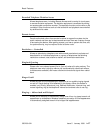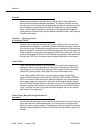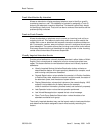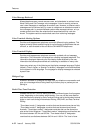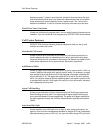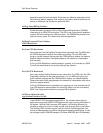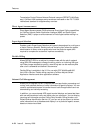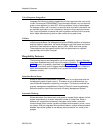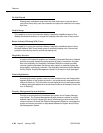
Features
555-230-024
A-34 Issue 5 January 1998
bers back into Auto-In work mode after a system restart. Although not restricted
to such, this feature is intended to be used for splits containing only recorders or
voice-response units.
Automatic Call Distribution
Allows incoming calls to connect automatically to specific splits. An ACD split is
a hunt group designed to receive a high volume of similar calls. Calls to a spe-
cific split are automatically distributed among the agents, or hunt group mem-
bers, assigned to that split.Calls queue to the split until an agent is available. You
can assign a supervisor to each split. The split supervisor can listen in on agent
calls, monitor the split queue status, and assist agents. If you have Call Manage-
ment System or Basic Call Management System, you can measure and create
reports on the status of ACD agents, splits, and trunks.
Basic Call Management System
Basic Call Management System provides real-time and historical reports to assist
you in managing agents, ACD splits (hunt groups), VDNs, and trunk groups. You
can display reports on the Management Terminal or print them. In addition, you
can schedule historical reports to print automatically on the system printer.
Call Management System (CMS)
Allows you to collect and monitor ACD facilities and personnel. You can create
reports on the status of agents, splits, trunks, vectors, and vector directory num-
bers. You can store historical CMS reports or display real-time reports at a termi-
nal. Unlike Basic Call Management System, the CMS resides on an adjunct
computer that connects to the system via a data link.
Call Prompting
Allows the system to collect information from the calling party and direct the calls
via Call Vectoring. The caller is verbally prompted by the system and enters infor-
mation in response to the prompts. This information is then used to redirect the
call or handle the call in some other way (taking a message, for example). This
feature is mostly used to enhance the efficient handling of calls in the Automatic
Call Distribution application.
Call Vectoring
Processes incoming and internal calls according to a programmed set of com-
mands. Vector commands may direct calls to on-premise or off- premise destina-
tions, to any hunt group or split, or to a specific call treatment such as an
announcement, forced disconnect, forced busy, or delay treatment. For example,
the system can collect digits from the user via Call Prompting and route calls to a




